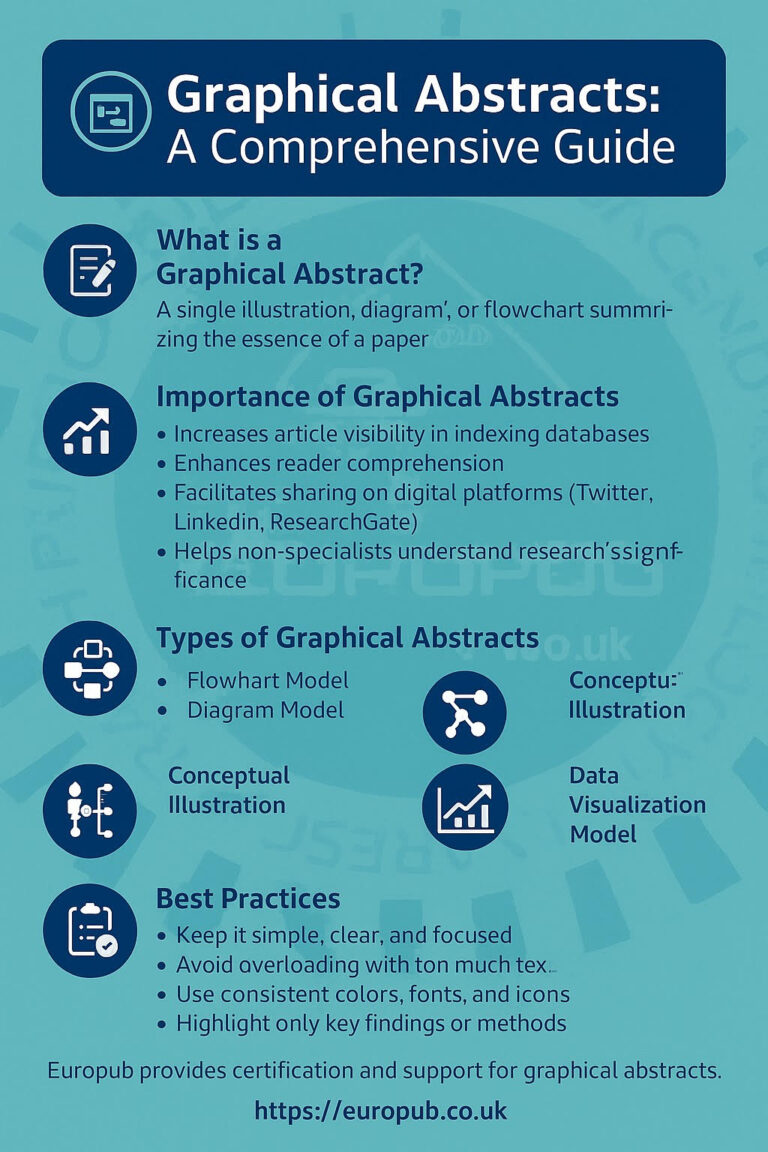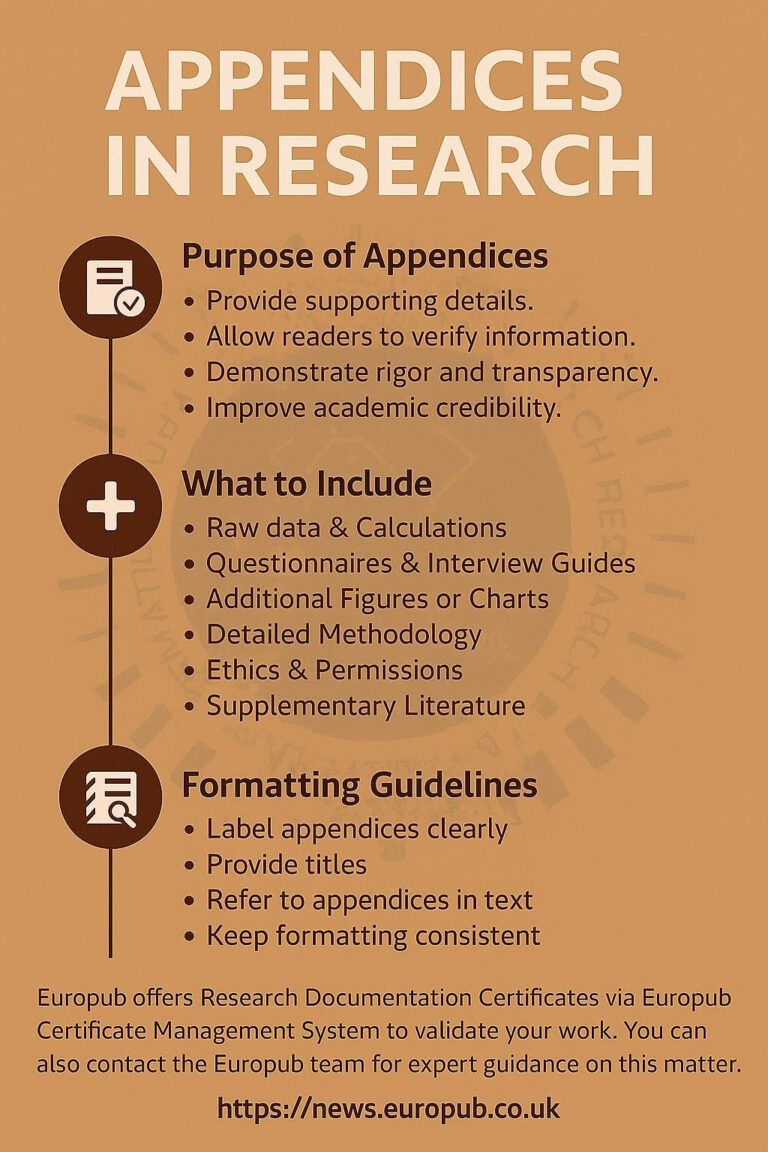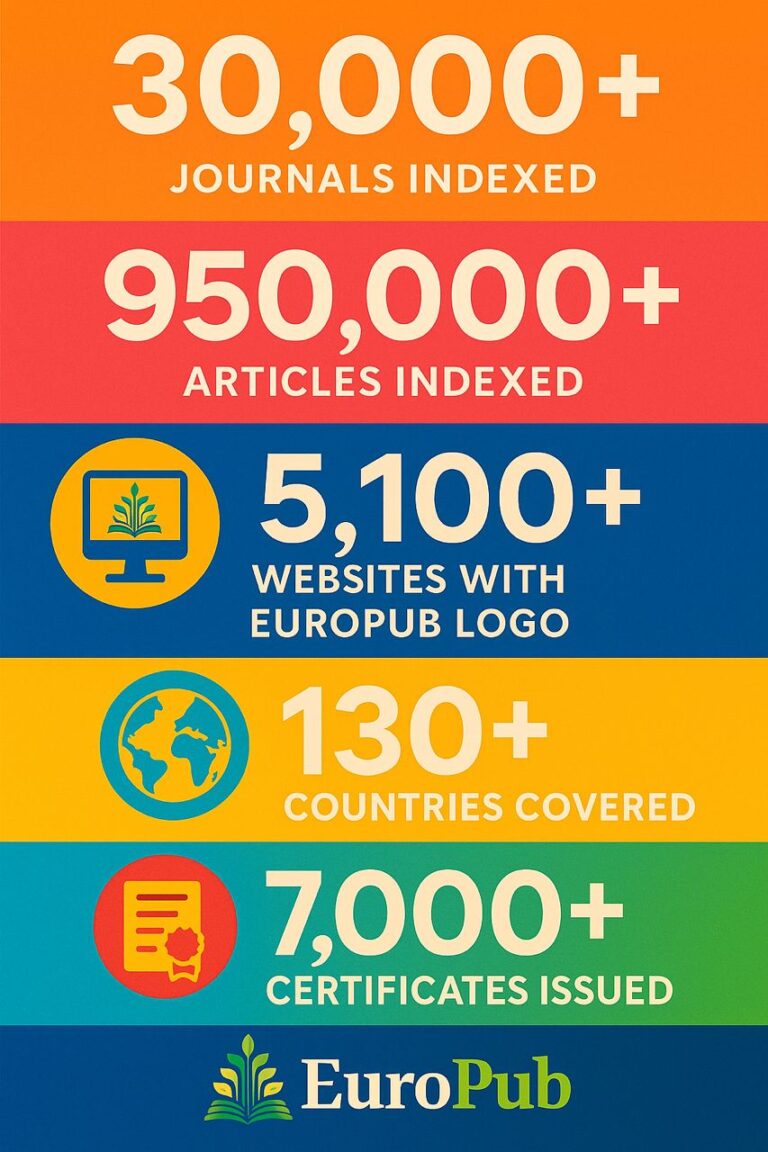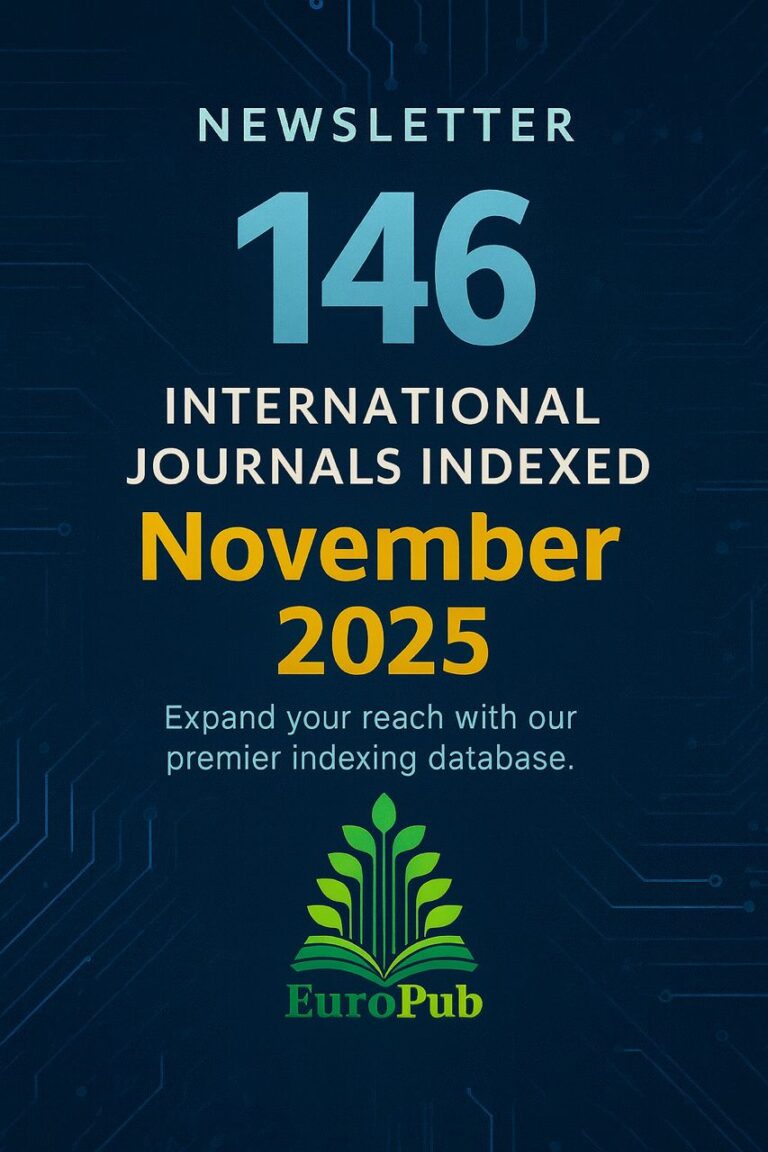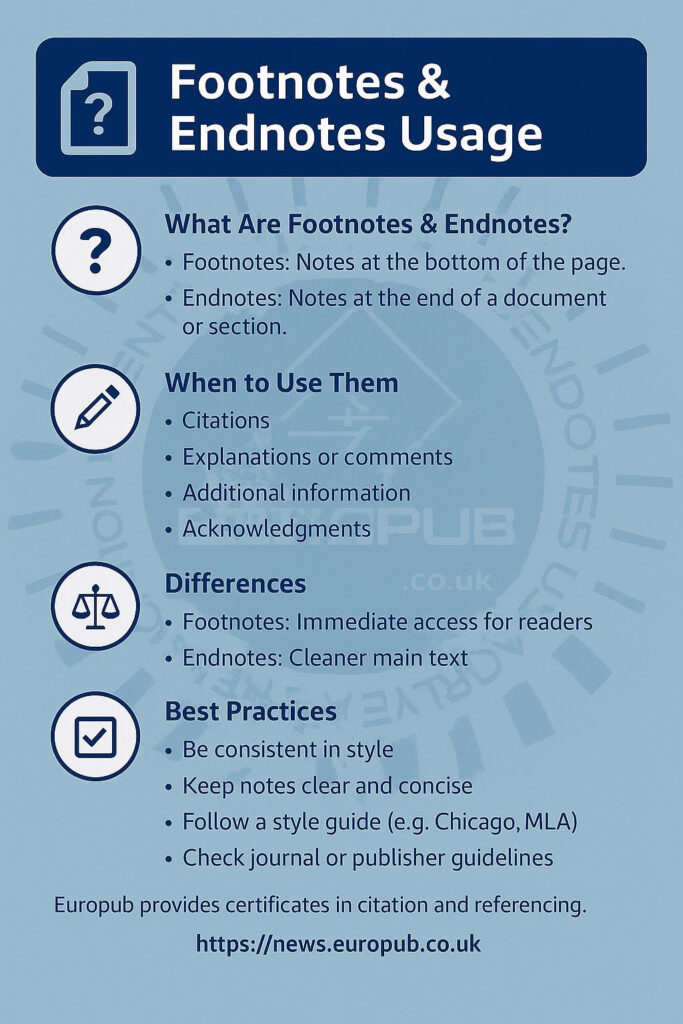
Introduction
Footnotes and endnotes are important tools in academic writing that provide supplementary information, citations, and clarifications without disrupting the main flow of the text.
- Footnotes appear at the bottom of the page.
- Endnotes are collected at the end of a chapter or document.
Both serve the purpose of enhancing readability, credibility, and accuracy while maintaining a smooth academic narrative.
When to Use Footnotes & Endnotes
- Citations → To reference sources in styles like Chicago or Turabian.
- Explanations → To clarify a concept without interrupting the text.
- Additional Information → Background, alternative interpretations, or cross-references.
- Acknowledgments → Mentioning permissions or research notes.
Advantages of Footnotes
 Easy for readers to find references instantly.
Easy for readers to find references instantly.
 Useful for detailed explanations.
Useful for detailed explanations.
 Standard in historical and legal writing.
Standard in historical and legal writing.
Advantages of Endnotes
 Keeps pages clean and uncluttered.
Keeps pages clean and uncluttered.
 Better for long manuscripts or books.
Better for long manuscripts or books.
 Preferred in some publishing styles.
Preferred in some publishing styles.
Common Style Guide Rules
- Chicago Style → Allows both footnotes and endnotes (with bibliography).
- APA Style → Rarely uses footnotes, only for content clarification.
- MLA Style → Endnotes preferred, footnotes less common.
- Turabian → Often footnotes in history and humanities.
Best Practices
 Be consistent: don’t mix styles within one paper.
Be consistent: don’t mix styles within one paper.
 Keep notes brief and relevant.
Keep notes brief and relevant.
 Always follow journal or publisher guidelines.
Always follow journal or publisher guidelines.
 Use a citation manager (Zotero, EndNote, Mendeley).
Use a citation manager (Zotero, EndNote, Mendeley).
 Avoid excessive footnotes that distract from the main text.
Avoid excessive footnotes that distract from the main text.
Examples
- Footnote Citation (Chicago):Text: Many scholars argue this point.^1Footnote: 1. John Smith, History of Science (Oxford: Oxford University Press, 2019), 45.
- Endnote Citation:At end of chapter → full list of numbered references.
Europub Certification & Guidance
Europub provides Citation & Referencing Certificates via its Certificate Management System:
 Certificate of Academic Referencing
Certificate of Academic Referencing
 Certificate of Research Documentation Skills
Certificate of Research Documentation Skills
With Europub certification, you can:
- Master footnote and endnote usage.
- Strengthen your research documentation.
- Increase acceptance in top-tier journals.
 Apply here: https://cms.europub.co.uk
Apply here: https://cms.europub.co.uk
 Main site: https://europub.co.uk
Main site: https://europub.co.uk
 Newsletter: https://news.europub.co.uk
Newsletter: https://news.europub.co.uk
 Europub experts also provide guidance in selecting citation styles based on journal or thesis requirements.
Europub experts also provide guidance in selecting citation styles based on journal or thesis requirements.
 Frequently Asked Questions (FAQs) on Footnotes & Endnotes
Frequently Asked Questions (FAQs) on Footnotes & Endnotes
1. Which is better: footnotes or endnotes?
Answer: Depends on discipline and publisher. Footnotes are preferred in history, law, and humanities; endnotes in books and long theses.
2. Do APA and MLA use footnotes?
Answer:
- APA → Rarely, only for content clarification.
- MLA → Uses endnotes more often.
3. Should I use both footnotes and endnotes in one paper?
Answer: Generally no. Stick to one consistent system unless the journal explicitly allows mixing.
4. Can footnotes replace a bibliography?
Answer: In Chicago style, full citation footnotes can replace a bibliography, but most journals still require one.
5. How do I format footnotes?
Answer: Numbered consecutively, superscript in text, full citation in the note (shortened in later references).
 Reference: Chicago Manual of Style
Reference: Chicago Manual of Style
6. Are footnotes allowed in Scopus/ISI journals?
Answer: Yes, but formatting must align with journal guidelines (most prefer endnotes or inline citations).
Conclusion
The footnotes and endnotes section is crucial for maintaining credibility, transparency, and clarity in academic writing. Choosing the correct style enhances readability, compliance, and acceptance. Europub strengthens this process by offering certifications and guidance in academic referencing.
